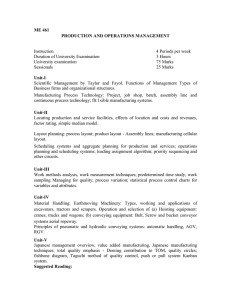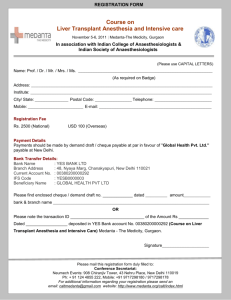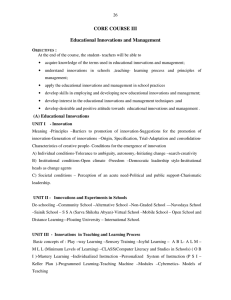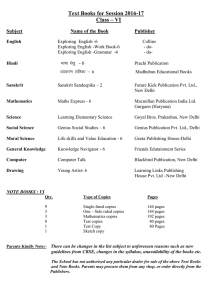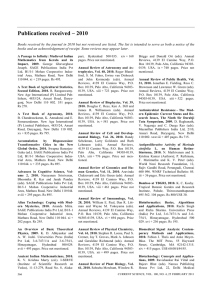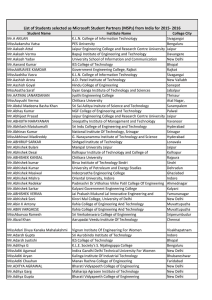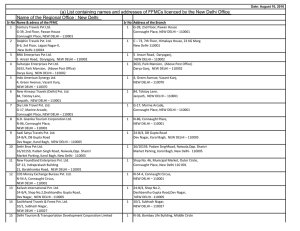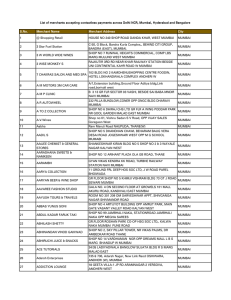Document 15526267
advertisement
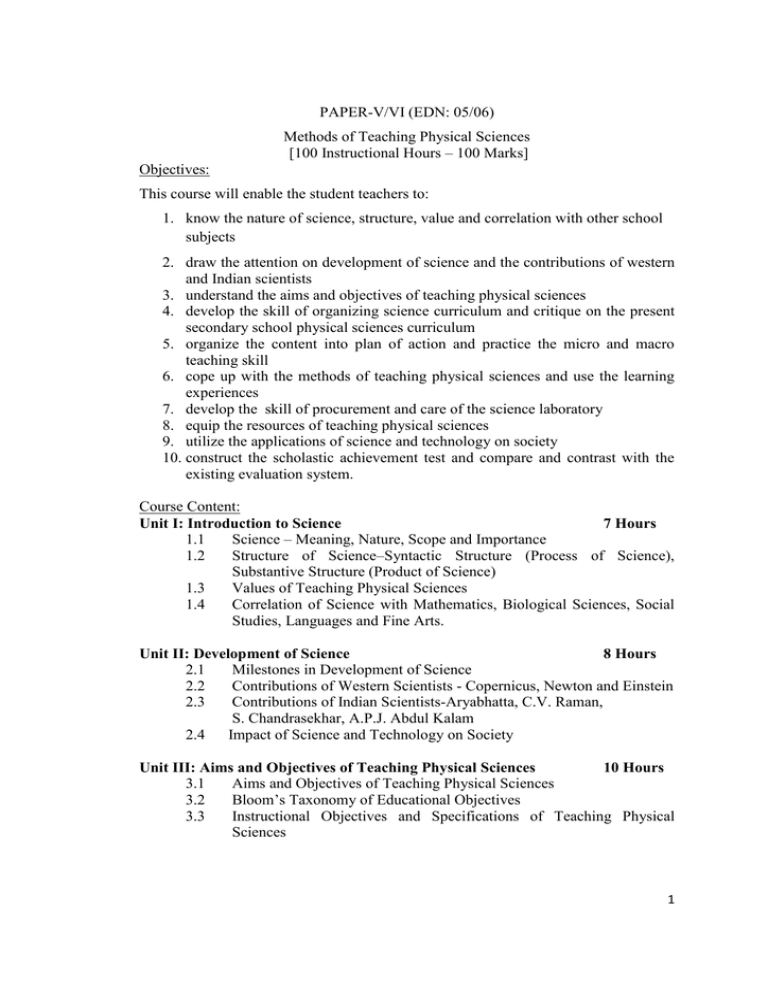
PAPER-V/VI (EDN: 05/06) Methods of Teaching Physical Sciences [100 Instructional Hours – 100 Marks] Objectives: This course will enable the student teachers to: 1. know the nature of science, structure, value and correlation with other school subjects 2. draw the attention on development of science and the contributions of western and Indian scientists 3. understand the aims and objectives of teaching physical sciences 4. develop the skill of organizing science curriculum and critique on the present secondary school physical sciences curriculum 5. organize the content into plan of action and practice the micro and macro teaching skill 6. cope up with the methods of teaching physical sciences and use the learning experiences 7. develop the skill of procurement and care of the science laboratory 8. equip the resources of teaching physical sciences 9. utilize the applications of science and technology on society 10. construct the scholastic achievement test and compare and contrast with the existing evaluation system. Course Content: Unit I: Introduction to Science 7 Hours 1.1 Science – Meaning, Nature, Scope and Importance 1.2 Structure of Science–Syntactic Structure (Process of Science), Substantive Structure (Product of Science) 1.3 Values of Teaching Physical Sciences 1.4 Correlation of Science with Mathematics, Biological Sciences, Social Studies, Languages and Fine Arts. Unit II: Development of Science 8 Hours 2.1 Milestones in Development of Science 2.2 Contributions of Western Scientists - Copernicus, Newton and Einstein 2.3 Contributions of Indian Scientists-Aryabhatta, C.V. Raman, S. Chandrasekhar, A.P.J. Abdul Kalam 2.4 Impact of Science and Technology on Society Unit III: Aims and Objectives of Teaching Physical Sciences 10 Hours 3.1 Aims and Objectives of Teaching Physical Sciences 3.2 Bloom’s Taxonomy of Educational Objectives 3.3 Instructional Objectives and Specifications of Teaching Physical Sciences 1 Unit IV: Approaches / Methods and Teaching Techniques of Teaching Physical Sciences 12 Hours 4.1 Inductive and Deductive Approaches 4.2 Teacher Centered Methods – Lecture, Lecture cum Demonstration, Historical 4.3 Student Centered Methods – Heuristic, Project, Scientific and Laboratory 4.4 Modern Teaching Techniques – Brainstorming, Team Teaching, and Digital Technology Unit V: Planning of Teaching Physical Sciences 12 Hours 5.1 Micro Teaching – Concept and Meaning, Skills of Micro Teaching, Practice of Micro Teaching Skills: Introduction, Explanation, Probing Questions, Reinforcement, and Closure. 5.2 Year Plan and Unit Plan 5.3 Lesson Plan – Herbartian and Constructivist Approaches 5.4 Learning Experiences Unit VI: Science Curriculum 12 Hours 6.1.1 Curriculum–Concept and Meaning, Principles of Curriculum Construction 6.2 Different Approaches of Curriculum Organisation: Concentric, Topical, Psychological & Logical 6.3 Qualities of a Good Science Text Book 6.4 Critical Analysis of a High School Physical Science Text Book. Unit VII: Science Laboratories 10 Hours 7.1 Importance of Practical Work in Science 7.2 Planning and Organisation of Science Laboratories 7.3 Procurement and Care of Laboratory Equipment, Registers, First-Aid, and Safety Management 7.4 Development of Improvised Apparatus Unit VIII: Resources in Teaching Physical Sciences 10 Hours 8.1 Science Clubs, Science Exhibition, Science Museums 8.2 Science Library 8.3 Role of Governmental Organizations in Popularizing Science: DST, CSIR, BARC, ISRO, DRDO, NGRI and CCMB 8.4 Role of Non-Governmental Organizations in Development of Science Unit IX: Teaching Learning Material in Physical Sciences 10 Hours 9.1 Edgar Dale’s Cone of Experience 9.2 Over Head Projector (OHP); LCD Projector; TV; Computer 9.3 Charts; Models; Specimens; Display Boards 9.4 Improvisation of Teaching Aids Unit X: Evaluation in Physical Science 12 Hours 10.1 Concept of Test, Examination, Measurement, Assessment and Evaluation 2 10.2 10.3 10.4 10.5 Evaluation – Meaning, Process, Types and Tools Qualities of a good test and Types of Tests Preparation of Scholastic Achievement Test (SAT) with Weightage Tables and Blue Print Analysis and Interpretation of Test Scores References: 1. Amit Kumar (1999), ‘Teaching of Physical Sciences’, Anmol Publications Pvt. Ltd., New Delhi 2. Anju Soni (2000), ‘Teaching of Science’, Tandon Publications, Ludhiana 3. Bhowthika Rasayana Sastrala Bhodhana (2010), Telugu Academy, Hyderabad 4. Bhaskarachary. D.V.R. and Subba Rao. C.N.V. (2001), ‘Vignana Sastramulo Druvatharalu’, Telugu Academy, Hyderabad 5. Das. R.C.(1990), ‘Science Teaching in Schools’, Sterling Publications Pvt. Ltd., New Delhi. 6. Nagaraju. M.T.V. (2008), ‘Hand Book for Teaching Physical SciencesMethods and Techniques’, Kanishka Publishers and Distributors, New Delhi. 7. Narendra Vaidya (1989), ‘The Impact of Science Teaching’, Oxford and IBH publishing Co. Pvt. Ltd. 8. Rajiv Garg (1994), ‘World Famous Scientists’, Pushtak Mahal, New Delhi 9. Sharma. R.C. (1987), ‘Modern Science Teaching’, Dhanpat Rai and sons, New Delhi 10. Siddiqui and Siddiqui (1998), ‘Teaching of Science Today and Tomorrow’, Doaba House, New Delhi 11. Vanaja.M. (2004), ‘Methods of Teaching Physical Sciences’Neelkamal Publiscations, Hyderabad 12. http://www.nobel.se/physics/laurates.html 13. http://www.scienceworld.wolform.co/physics.html 14. http://www.encyclopedia.com 3
